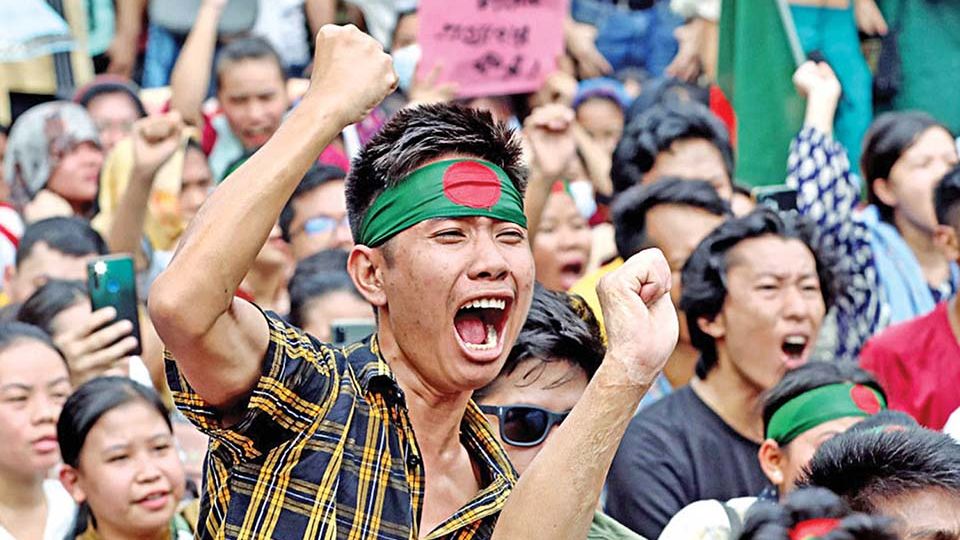July 8, 2025
DHAKA – On June 23, the Ministry of Cultural Affairs convened an inter-ministerial meeting to discuss a proposed amendment to the Small Ethnic Group Cultural Institute Act, 2010. The new draft is titled Cultural Institution for Ethnic Diversity Act 2025, replacing the term “small ethnic group” with “ethnic diversity”, and “institute” with “institution”.
While this might appear to be a mere change in wording, it raises a pressing and deeper concern: is this semantic shift a precursor to a larger policy move aimed at removing the constitutional recognition of indigenous peoples in Bangladesh?
More than semantics: A constitutional question
The relationship between the Bangladesh state and indigenous communities—particularly in the Chittagong Hill Tracts (CHT) and the plains—has been shaped through unique legislative and constitutional arrangements. These include: i) The Chittagong Hill Tracts Regulation, 1900; ii) Regional and District Council Acts; iii) The CHT Land Dispute Resolution Commission Act; and iv) Small Ethnic Group Cultural Institute Act, 2010.
These legal frameworks not only acknowledge the distinct identity of indigenous groups but also ensure a respectful and historically rooted relationship with the state. Any change to these foundations, especially involving terminology, therefore demands careful scrutiny and inclusive dialogue.
From ‘indigenous’ to ‘ethnic diversity’: A shift in philosophy
Replacing “small ethnic group” with “ethnic diversity” might seem innocuous, but it signifies a deeper philosophical shift. While “indigenous” or “small ethnic groups” refer to specific, constitutionally recognised peoples with historical, cultural, and territorial rights, “ethnic diversity” is an abstract concept. It lacks legal clarity and dilutes the specificity of Indigenous identity.
Who exactly does “ethnic diversity” refer to? How is it defined? Does it include constitutionally recognised Indigenous peoples, or does it submerge their identity into a generic framework, stripping them of special protections?
No indigenous representation in policy revision?
Despite calling secretaries from 21 ministries and four director generals to the June 23 meeting, the government excluded direct participation of indigenous institute leaders. They were only allowed to attend online, without voting or speaking rights.
How can a law meant to represent indigenous cultural rights be amended without their physical presence or input? This exclusion raises fundamental questions about representation and legitimacy in the legislative process.
Undermining multiculturalism
If a state weakens the constitutional foundation of its most marginalised communities, it risks not only alienating them but also damaging the broader ideals of pluralism, inclusivity, and democratic governance.
Following the success of the people’s uprising on August 5, 2025, one piece of graffiti captured the national mood: “This country doesn’t belong to any one group. It belongs to all of us.”
This sentiment must be reflected in state policy, especially towards indigenous peoples.
A constructive proposal
We urge the government not to erase identity through abstraction. Instead of shifting from “tribal”, “small ethnic group”, or “ethnic diversity”, we propose enacting a new, modern, and inclusive law titled: Indigenous Cultural Institute Act.
Such legislation must be developed with indigenous representation and built on the principles of constitutional recognition, cultural protection, and administrative participation. This would strengthen—not sever—the bridge between the majority and the minorities in our country.
A call from the new generation
Today’s indigenous youth no longer want to live on the margins of the republic. They seek meaningful participation in every aspect of national development, from policymaking to education, culture, and beyond.
The state must realise that acknowledging and empowering its indigenous peoples is not a concession; it is a constitutional and moral obligation.
Mong Sing Hai Marma is a journalist at The Daily Star.
Views expressed in this article are the author’s own.


